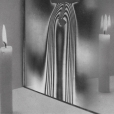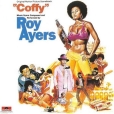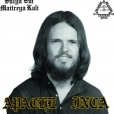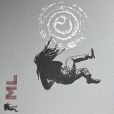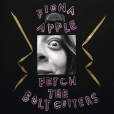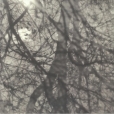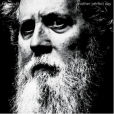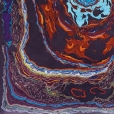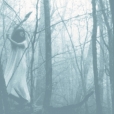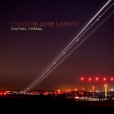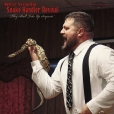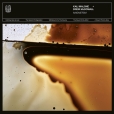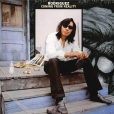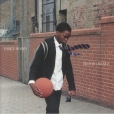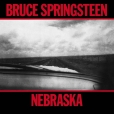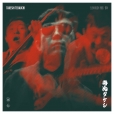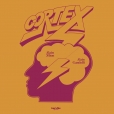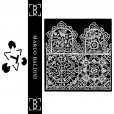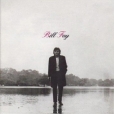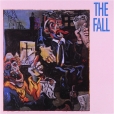Your basket is empty

Brand new interpretations of their debut album, ten years on.
‘The Universe Smiles Upon You ii was recorded on January 4-6, 2025, in the same family barn of guitarist Mark Speer, across the same dates where TUSUY was first conceived ten years earlier. Though the conditions were the same — dirt floor, brutally cold, minimal sound isolation, all takes live — the songs aren’t. They’re re-approached, some changed more than others, harnessing the lightning-in-a-bottle energy of TUSUY while discovering what would be unique this time around, in this stage of the band’s life.
‘The result moves like ripples on the water across ten hypnotizing tracks, the barn creating a sense of spaciousness, serenity and creative freedom, nearby wildlife (listen out for the birds on August Twelve ii), rattles and creaks of the barn and all. It’s a tapestry of small movements in nuanced arrangements, slowly revealing the new life, stories and character of someone you’ve met again for the first time in ten years.’
‘Boomerangs back into the slashing chords and frenzied double-picking of the Harry Pussy years, tossing the gentler melodic glow of the last few solo records into the dustbin. In other words, this may be Orcutt’s most overtly punk-rockist record since Gerty Loves Pussy, his first solo electric LP from a decade ago. It’s an affirmation that Orcutt is above all a lead player—angular runs scaling the heavens, ricocheting back to ground zero before climbing again. Orcutt builds tension with short phrases, repeated with slight variability until it seems like they’ll never stop, finally slamming into a fresh line like the dawning valley at the crest of the mountain pass. Another Perfect Day is, ultimately, something of a solo guitar Nouveau Roman, an exhilarating run through melodic reiteration, impossible crescendos (check out those ecstatic crowd hoots on For the Drainers) breaking into—a moment rarely found on an Orcutt record—soft, whisper-quiet tracer notes at the end of A Natural Death. Another Perfect Day returns Orcutt to the immediacy of his earliest records while maintaining the melodic complexity, phrasing, and flow of a player, who’s been going, what—four-plus decades now? And when he taps his roots, it’s a reminder of exactly what was so exciting about Orcutt’s playing in the first place.’
‘Based in the south of France, Beduneau builds intricate self-playing installations and DIY electronics. Bringing a fresh and personal perspective to electronic and electroacoustic music, his work is intent on opening up dialogues about the social construction of disability, and other norms and conventions.
‘‘Clairon’ refers both to a medieval trumpet and to the beloved with whom this music was first shared, as a kind of impressionistic, though deeply moving sound-diary, during the stillness of the pandemic. The movement of air, pressure, resonance, and the physical properties of the trumpet are reimagined; organic ASMR tones, synthesized bird calls, and pirouetting melodies of pipes and bells score an imaginary biodome where chaos and harmony coexist.
‘Striking, singular, and boundary-pushing.’
‘Eleven pieces recorded over the past year, moving between the small town of Alfred in upstate New York, and Beirut; stepping out, as if onto ice, into a new life on a new continent during a time of tragedy, turmoil, and upheaval.
‘Unfamiliar instruments, new materials and new sounds delicately build on Yara’s intimate style, with its backbone of homemade mechanical music boxes and personal archive of family recordings. She explores the peculiar resonance of the metallophone, and delves into her collection of deconstructed toy pianos, guiding her music into ever more surreal territories… dreamlike, fragile, fragmentary, and strangely timeless.’
‘Sidesteps the traditional logic of how to play a song, moving outside the framework with which one would expect a standard to be treated. Three decades ago, in the early years, Toral used the guitar as a generator, to create discreet texture and droning tones. Later, he abandoned the guitar entirely, focusing on self-made electronics to render his music, and the silence from which it came, with a post-free jazz perspective. For the music of Spectral Evolution and Traveling Light, Toral has combined his methodologies, remaining ‘in the tradition’, even as the elongated harmonies seem to alter time and — says Toral — ‘the chords become events on their own.’ At points, the long tones evoke the sacred ennui of liturgic music, the choir or the organ standing in for silent contemplation while rumbling the ground beneath our feet. In addition to Toral’s guitars, sine wave, feedback and bass guitar, each track features clarinet, tenor saxophone, flügelhorn, and flute, by turn. One of Toral’s self-made devices incorporates a theremin to modulate feedback melodies. The spring of the old pours through the new in an unstoppable flow.’
Electrifying extracts from a Sunday service in the last snake-handling church in the Appalachians: the trance-like rhythms of a demented kind of rockabilly punk, with duelling guitars, concussive trap drums, and possessed, howling vocals.
“I’d sworn to stay far away from the snakes at the service,” recalls the recording engineer, “but instead they were waved in my face as they coiled in the preachers’ hands, and I crouched down at the foot of the altar tending to the equipment. The pastor soon was bitten and blood splattered, pooling on the floor. The female parishioners hurriedly came to wipe up the mess, and it instantly became clear just what the rolls of paper towels stacked on the pulpit had been for. You can actually hear this moment transpire towards the end of the track ‘Don’t Worry It’s Just a Snakebite (What Has Happened to This Generation?)’. The congregation leapt to its feet and a mini mosh-pit formed. The tag-team preachers huffed handkerchiefs soaked in strychnine, as they circled like aggro frontmen and an elderly worshipper held the flame of a candle to her throat, closing her eyes and swaying. The church PA blew out from the screams as a bonnet-wearing senior whacked away at a trap kit that dwarfed her. It was the most metal thing I’d ever seen, rendering Slayer mere kids play.”
Recorded in 1971, up the road from us at the Lansdowne Studios, this was the Sugarman’s last shot at the big-time.
‘Gathers revelatory unheard material from this prolific period including the fabled Electric Nebraska sessions with the E Street Band and solo home and studio recordings, joined by a 2025 remaster of the original album, plus a new performance film of all ten Nebraska songs played in sequence.
‘Springsteen’s 1982 acoustic masterwork is augmented by seventeen contemporary recordings (fifteen previously unreleased) that were part of the groundswell of inspiration that shaped Nebraska and share its haunting themes.’
‘The opener is a statement of intent — frazzled, shuffling drums, ketamine oud, heavy sub bass — something like Wordsound’s Scarab zooming out of the 90s into the future. Tombaroli is a head nodder, with insistent percussion and banging pulse. A lysergic fever-dream, Bullet Holes dips into spooked psychedelia; No Minus sounds like a distant cousin of DJ Premier’s production Come Clean, for Jeru.
‘Channel 83 lands us back in the club for a rib-rattling stomp, weaving mystical soundsystem magic with its stunted horns and swirling voices. The grimy judder of Expect Excerpt slides proceedings down to a bleary-eyed half-speed, like a party which won’t let you leave. Mount Point is a welcome release, an early morning sunrise — rich, slow, and shimmering — before Landings Dub signals the end of the journey with a metallic elegy; both a summing up of the record, and the contemplation of your flipping it, and re-entering the world of Detraex Corp.’
‘We first became aware of the Florence-based composer Marco Baldini via the incredible Another Timbre label.
‘His albums, Vesperi and Maniera, blew us away. Maniera, Marco’s second album for the label consists of seven chamber works for strings, beautifully played by Apartment House. If you haven’t heard it go straight to Another Timbre’s Bandcamp and check it out! Vesperi, Marco’s first release on Another Timbre, from around a year before is also absolutely unmissable, it’s comprised of three pieces derived from works by 16th century Italian composers alongside original compositions.
‘Both albums have provided much needed calm in turbulent times. Marco kindly accepted our invitation to compile a mixtape, and here it is! Thank you so much, Marco!’

